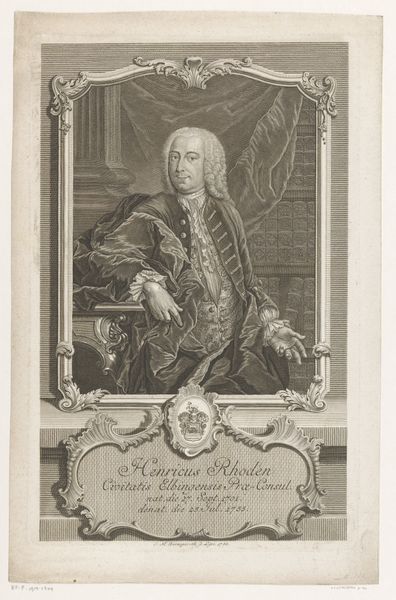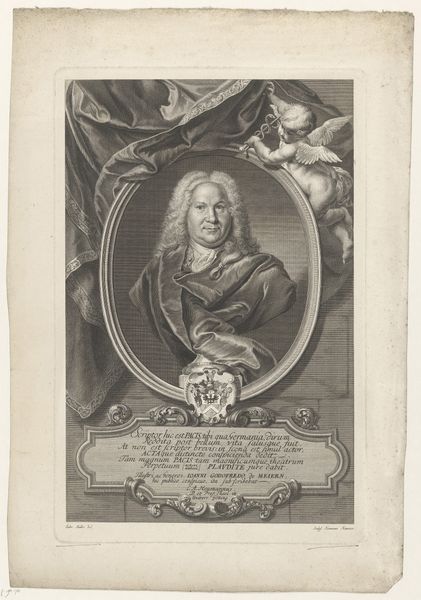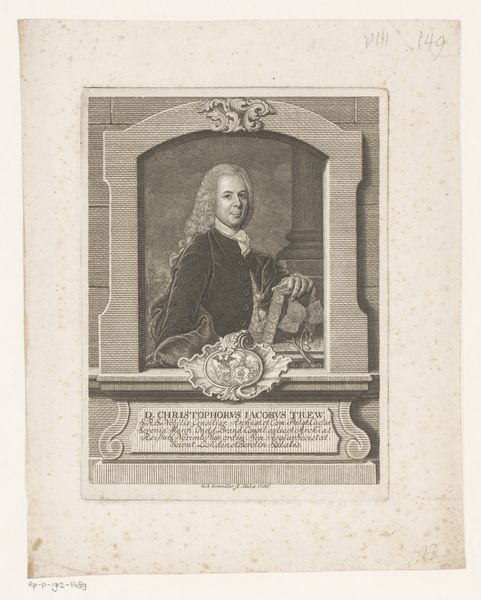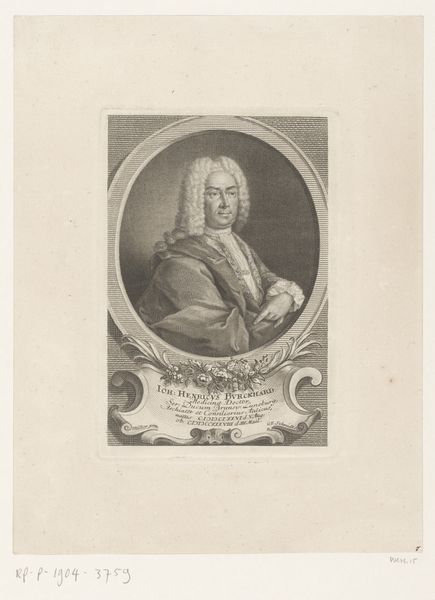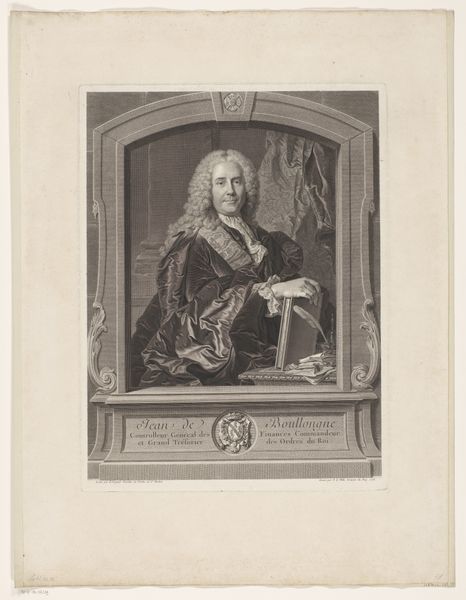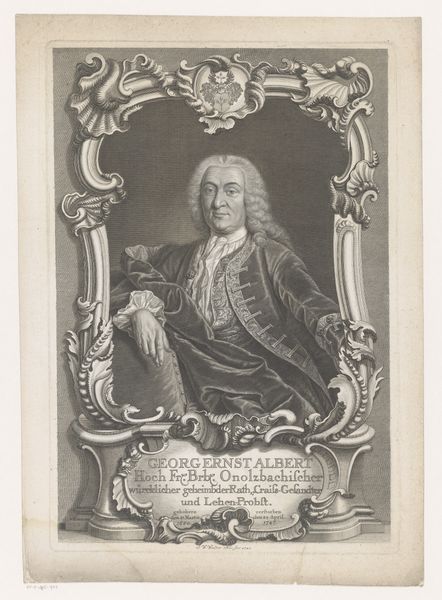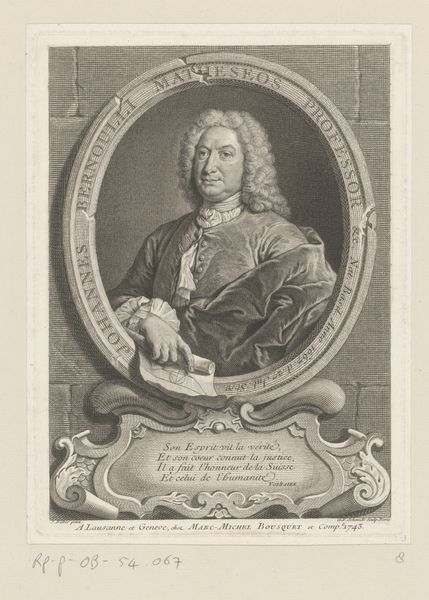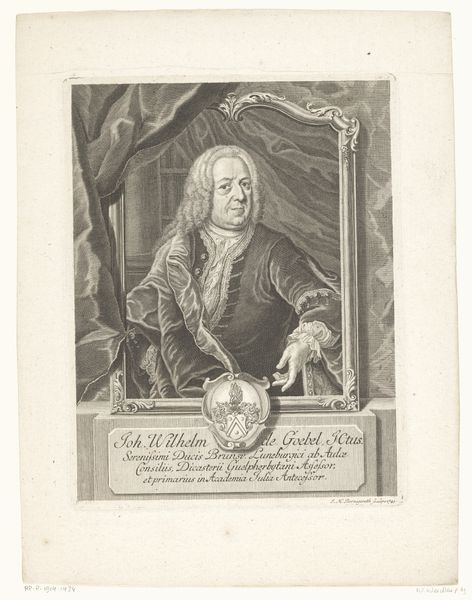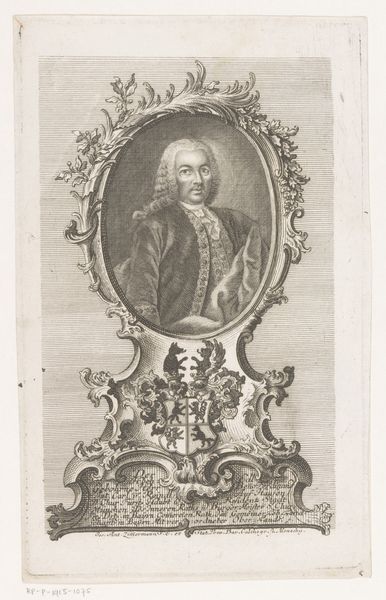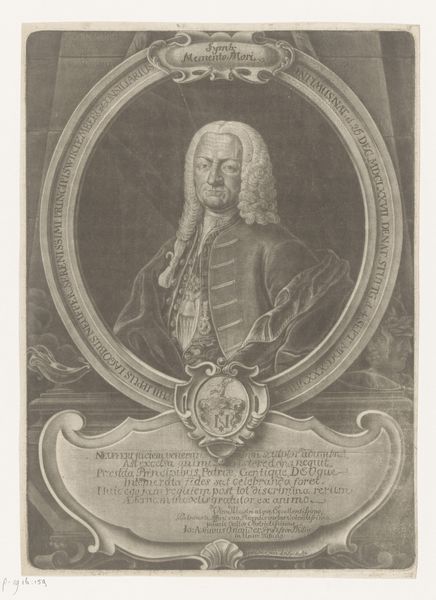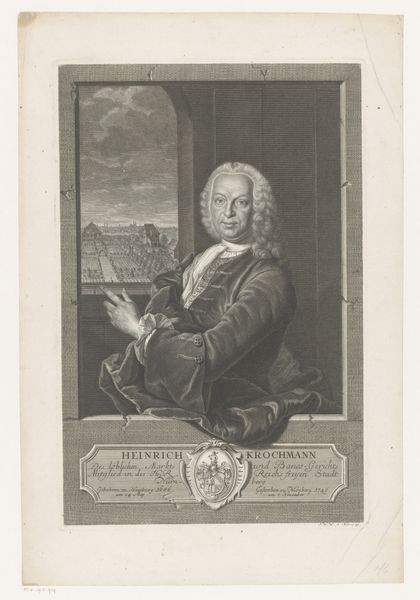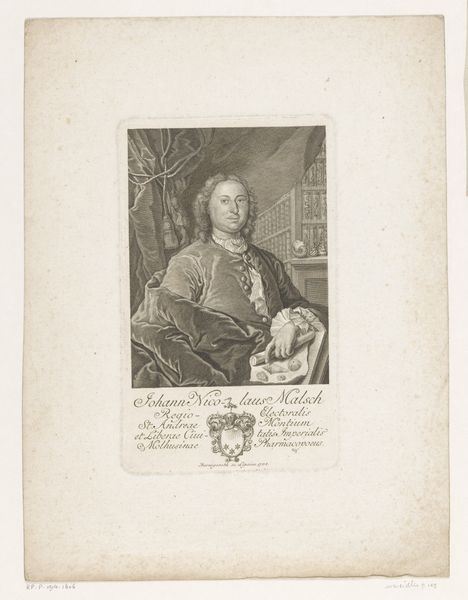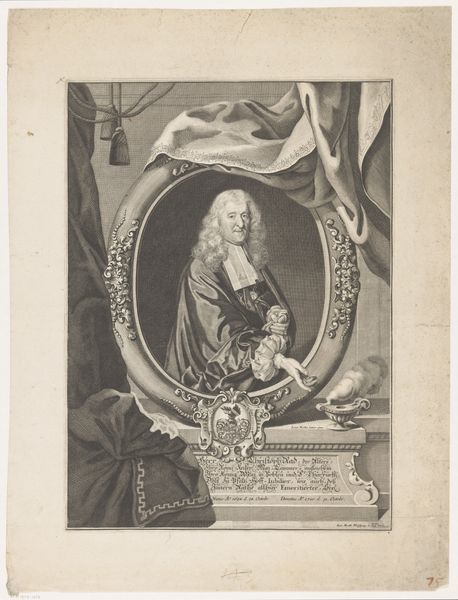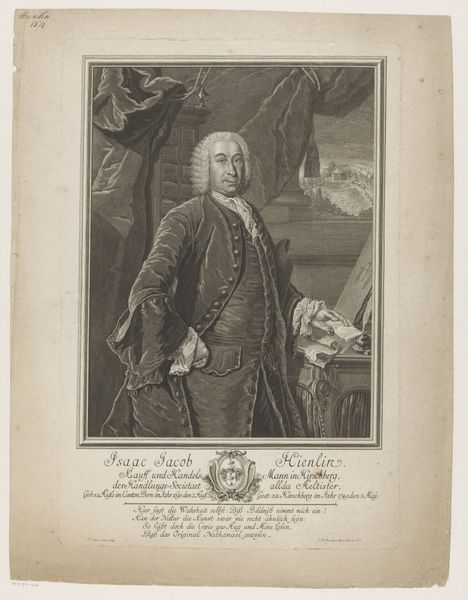
print, paper, engraving
#
portrait
#
baroque
# print
#
old engraving style
#
paper
#
engraving
Dimensions: height 299 mm, width 183 mm
Copyright: Rijks Museum: Open Domain
Editor: Here we have Johann Martin Bernigeroth's 1756 engraving, "Portret van Johann Friedrich Weidler," currently held in the Rijksmuseum. It's quite a formal piece, almost stately. What can you tell me about it? Curator: The portrait certainly projects a sense of authority and status. We see Weidler, identified by the Latin inscription below, framed almost theatrically, but I am curious about who would commission such a print and why. These types of images were often used to circulate an idea of a person’s public image. Do you think Weidler was someone that people would recognize on the street? Editor: I doubt it! It looks like he's surrounded by the accoutrements of scholarship – books, fine clothing – items of importance in those circles, suggesting this would appeal to the same people he surrounded himself with. Was it a kind of intellectual branding, almost like a seventeenth-century academic headshot? Curator: Exactly. Prints like this circulated amongst the educated elite. The Latin inscription is key. What does it communicate about the subject and the intended audience? It highlights his qualifications and titles to a restricted educated class that reads Latin and celebrates their collective belonging to that circle. What message does that communicate? Editor: Well, it sets him apart, establishing him as an important intellectual figure and targeting this select group of people. I am gathering it is a demonstration of learned status designed to affirm Weidler's role within academic circles and broadcast his prestige. Curator: Precisely. The institution, be it the academic elite, helped solidify the importance of this kind of image, both materially through the circulation of these prints and immaterially via cultural ideas of intellect and knowledge. These aren’t just pictures of people; they’re reflections of social structures. I wonder where this one may have hung? Editor: I never thought of portraits like that, more than simple illustrations. It’s so interesting to consider the political dynamics within what seem like simple commemorative engravings! Thanks! Curator: Likewise. It's all about seeing how art participates in, and is shaped by, the society around it.
Comments
No comments
Be the first to comment and join the conversation on the ultimate creative platform.
